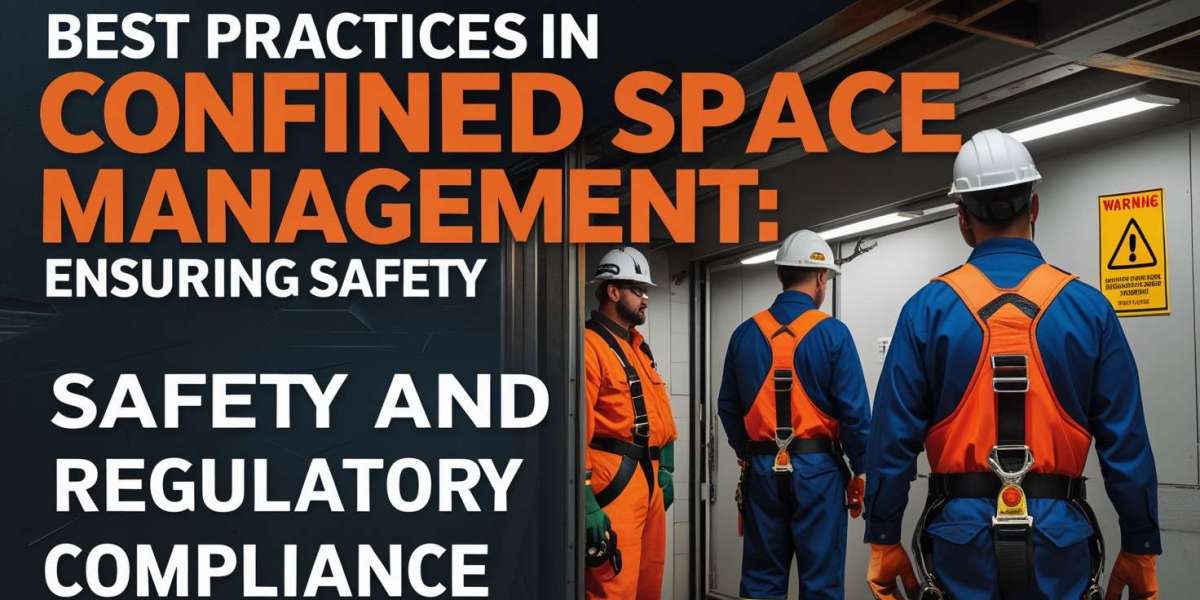In industrial and workplace settings, confined spaces present unique challenges that require specialized management to ensure safety and regulatory compliance. Understanding the risks associated with confined spaces and implementing effective protocols are essential for safeguarding workers and maintaining legal standards.
This article delves into the best practices for confined space management, covering key aspects such as regulatory requirements, risk assessments, safety procedures, training, technology utilization, and continuous improvement strategies. By following these guidelines, organizations can create a safer working environment and mitigate the inherent dangers of confined spaces.
Introduction to Confined Space Management
The Definition and Characteristics of Confined Spaces
Confined spaces are like the awkward middle child of the workspace – small, limited entry and exit points, and often lacking proper ventilation. Think of crawl spaces, tanks, and sewers where only the bravest dare to venture. These spaces pose serious risks due to limited oxygen, hazardous substances, or the potential for engulfment.
The Importance of Proper Confined Space Management
Proper confined space management is the safety net that keeps workers from taking an unexpected tumble into the abyss of danger. It involves identifying, assessing, and controlling risks to ensure everyone emerges unscathed. Because let's face it, nobody wants to be the subject of the next "Daring Rescues" TV special.
Understanding Regulatory Requirements for Confined Spaces
Overview of OSHA and Industry Standards for Confined Spaces
OSHA (Occupational Safety and Health Administration) has a whole list of rules and regulations to keep confined spaces from turning into the set of a horror movie. Industry standards also offer guidance on ventilation, communication, and emergency response to prevent any real-life nightmares.
Navigating Permitting and Compliance Issues
Navigating confined space permitting and compliance is like trying to decipher a treasure map written in Klingon. Understanding the paperwork, training requirements, and communication protocols is crucial to avoid getting lost in a maze of regulations. Remember, compliance is key to staying in the safety zone.
Developing a Comprehensive Confined Space Management Program
Establishing Roles and Responsibilities for Confined Space Management
In the confined space management world, everyone needs to know their role – the captain, the navigator, and even the deckhands. Clearly defining who does what ensures that when the ship hits rough waters, everyone knows how to steer toward safety.
Creating Written Confined Space Entry Procedures
Think of written confined space entry procedures as the IKEA instructions for safety. They guide workers step by step through the process, from checking equipment to testing the air quality. Following these procedures is the difference between smooth sailing and hitting an iceberg.
Conducting Thorough Risk Assessments in Confined Spaces
Identifying Potential Hazards in Confined Spaces
When it comes to confined spaces, hazards lurk around every corner like a sneaky ninja. From toxic gases to unsteady surfaces, identifying these hazards is crucial to prevent accidents. It's like playing a game of "Spot the Danger" – except the stakes are much higher.
Assessing Risk Levels and Implementing Controls
Once the hazards are identified, it's time to whip out the hazard-slaying sword (metaphorically, of course) and assess the risk levels. Implementing controls like proper ventilation, personal protective equipment, and emergency protocols is the key to turning a hazardous confined space into a safe haven. Remember, safety first, heroics later.
Implementing Effective Safety Protocols and Procedures
In the wild world of confined spaces, where even a sneeze can cause a calamity, implementing top-notch safety protocols is as crucial as remembering to breathe (preferably not into your respirator). One key safety dance move in confined spaces is the Lockout/Tagout procedure. Picture this: you lock up that pesky equipment, slap on a tag to warn others, and voilà, you've just added a layer of protection thicker than grandma's lasagna.
And let's not forget about having your Emergency Response Plan on speed dial for confined space incidents. It's like having a fire extinguisher for your sanity – quick access to a plan can make a world of difference when things go from zero to "Houston, we have a problem" in seconds.
Training and Educating Personnel on Confined Space Safety
Just like teaching your pet parrot to say "safety first," providing Confined Space Entry Training for workers is a must. Equip your crew with the knowledge and skills to navigate confined spaces like a pro, avoiding potential hazards faster than you can say "danger, Will Robinson."
And remember, education doesn't end at graduation. Keep your team sharp by continuously updating them on the latest safety practices. It's like adding extra lives in a video game – staying informed could mean the difference between reaching the next level and getting a game over screen.
Utilizing Technology and Equipment for Safe Confined Space Entry
When it comes to confined spaces, technology and equipment are your trusty sidekicks. Monitoring and ventilation equipment are like the Robin to your Batman – keeping an eye on air quality and keeping things fresh when the going gets stuffy.
Communication devices are your lifeline in the depths of confined spaces. From walkie-talkies to fancy gadgets straight out of a spy movie, these tools ensure that you're never truly alone, even when it's just you and the darkness.
Continuous Improvement and Monitoring in Confined Space Management
To stay ahead of the confined space game, implementing a system for regular inspections is key. It's like giving your space a health check-up – catching issues before they spiral out of control. and last but not least, reviewing incident reports and learning from them is like taking a crash course in "what not to do." Implementing lessons learned can mean the difference between a one-time oopsie and a repeating blooper reel.
Conclusion
Effective confined space management is crucial for protecting workers and preventing accidents in hazardous environments. By adhering to regulatory standards, implementing comprehensive safety protocols, providing thorough training, and continuously improving practices, organizations can ensure the well-being of their personnel and maintain compliance with industry regulations. Adopting these best practices not only enhances safety measures but also fosters a culture of vigilance and responsibility in confined space operations.
FAQ
1. What is a confined space?
A confined space is defined as an area that is not designed for continuous occupancy and has limited means of entry or exit. These spaces can include tanks, vessels, silos, pits, and tunnels. They may present hazards such as toxic gases, low oxygen levels, or physical hazards.
2. What are the key safety practices for working in confined spaces?
Key safety practices include:
- Conducting a thorough risk assessment before entry.
- Ensuring proper ventilation to maintain safe air quality.
- Using appropriate personal protective equipment (PPE).
- Implementing a permit system to control entry and monitor hazards.
- Training workers on confined space hazards and emergency procedures.
3. What regulatory compliance requirements apply to confined space management?
Regulatory compliance varies by country and industry, but generally includes adherence to safety standards set by organizations such as OSHA (Occupational Safety and Health Administration) in the U.S. Employers must develop a confined space entry program, conduct employee training, and maintain documentation of safety procedures and incidents.
4. How can organizations ensure effective training for employees working in confined spaces?
Organizations can ensure effective training by:
- Providing hands-on training that includes simulations of confined space scenarios.
- Regularly updating training materials to reflect current regulations and best practices.
- Assessing employee understanding through evaluations and practical exercises.
- Offering refresher courses to keep knowledge and skills current
5. What role does monitoring and communication play in confined space safety?
Monitoring and communication are critical in confined space safety. Continuous monitoring of air quality (for oxygen levels and hazardous gases) is essential. Additionally, establishing clear communication protocols ensures that workers can report hazards, request assistance, and alert others in case of emergencies.
6. What should be included in a confined space rescue plan?
A confined space rescue plan should include:
- Identification of potential rescue scenarios and hazards.
- Designation of a rescue team with appropriate training and equipment.
- Procedures for safe entry and exit during a rescue.
- Regular drills to ensure readiness and effectiveness of the rescue operations.
- Communication plans to alert emergency services if necessary.



